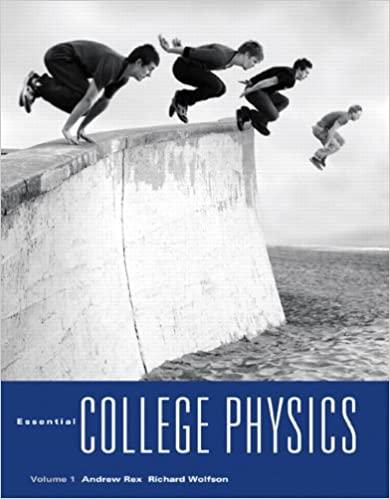please answer 1-4 on a seperate sheet of paper with explanation
1. A storm cloud 200 m off the ground sits over a fish pond that is initially at 20C. The pond is defined to be at voltage zero and the cloud is at 250 MV. A lightning strike carrying 50 C of charge leaves the cloud and hits the pond. (a) What is the electric potential energy carried by the 50 C of charge? (b) Assuming that all the energy of the transferred charge is absorbed by the water, how many kg of water can be raised to 100C and then boiled away? 2. A circuit is set up as the figure below. (a) Find current I; and I. (b) If the 3 resistor is a heater and is heating a cup of 30 g of water and 10 g of ice that is originally at 0C. What would be the final temperature of the water after 30 minutes? (c) Draw two arrows at location P to show the direction of magnetic field due to Wirel and Wire2, respectively. 3. Two very large conductor plates are connected to a 9-V battery, as shown in the figure. A proton is released from plate A, passes through a tiny slit in plate B and enters an area with a uniform magnetic field of 2 T (the red area shown in the plot). When entering the magnetic field area, the proton starts to curve upward. The dashed line in the figure shows the protons trajectory. You can assume the gravitational force on the proton is very small and can be ignored. (a) What are the surface charge densities carried by plate A and plate B, respectively? (Re- member to note whether the charge is positive or negative.) (b) What are the direction and magnitude of the electric force experienced by the proton when it is in between plate A and B? (c) What are the direction and magnitude of the magnetic force when the proton enters the red area? The magnetic field in this area is pointing 90 from proton travel direction. (d) What is the direction of the magnetic field in the red area? 9V 0.15m 4. (a) An object that is 0.03 m tall is placed at 0.1 m in front of a convex mirror, as shown in figure below. The mirror has a focal length of 0.2 m. What are the location and the height of the image? Is the image real or virtual? Is the image upright or inverted? For the location of the image, make sure you state the distance of the image to the mirror, and whether it is in front or behind the mirror. Mirror (b) Two thin converging lenses of focal lengths fl = 0.2 m and f2 = 0.6 m are separated by 0.2 m. An object is placed 0.6 m to the left of lensl. Find the position of the final image of the system







